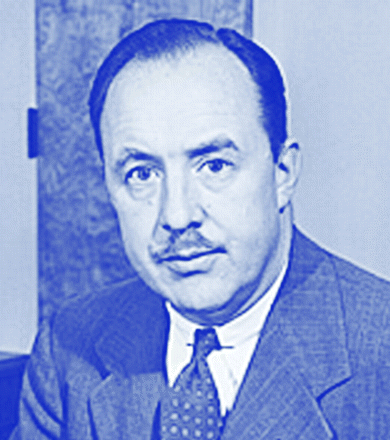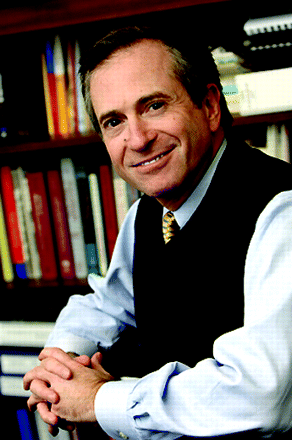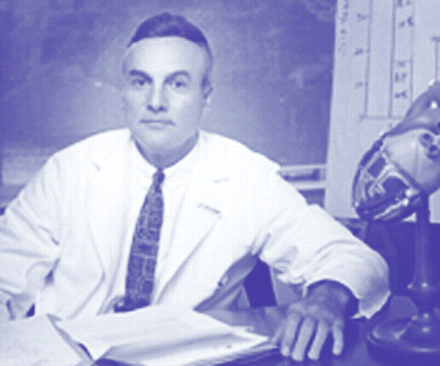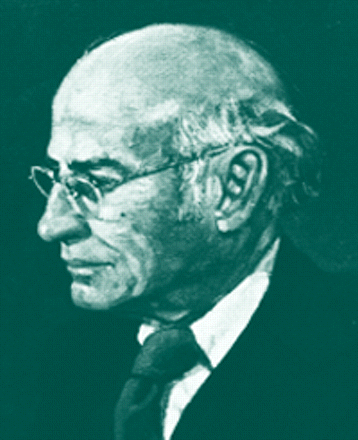Studies That Keep Rolling Along: Longitudinal Analyses Trade Intervention for Observations of Change
Last February, I received a six-page questionnaire asking about my health, exercise and activity habits, medicines and supplements being used, any newly diagnosed illnesses, and frequency of consumption of a long list of foods and beverages. The mailing came from the Health Professionals Follow-Up Study, conducted by the Harvard School of Public Health. The study, in which I have been enrolled since its inception in 1986, includes pharmacists (such as I), dentists, optometrists, osteopathic physicians, podiatrists, and veterinarians. All are male, complementing the all-female Nurses’ Health Study, which was initiated several years earlier.
The Health Professionals Study aims to learn how diet and lifestyle factors can influence the risks of heart disease, stroke, and cancer, and possibly promote healthy aging. The data gathered over the years have formed the basis of a stream of publications on the association of various dietary factors with diseases, the apparent effects of exercise, and, more recently, findings from genome-wide association studies (GWAS) (1).
Both of the above studies are longitudinal studies. The word longitudinal is not used here in its geographic sense, but under another definition: dealing with the growth and change of an individual or group over a period of years. Unlike clinical trials, longitudinal studies do not involve an intervention; their purpose is to collect data, analyze, and draw conclusions from the data. They serve no commercial interest, only the public health. Like “Old Man River,” longitudinal studies just keep rolling along; they are open-ended. In these Reflections we focus on a few of the major health-related studies of this type.
Effects of Nuclear Radiation
The longitudinal study that has become a household word among both professionals and the public is the Framingham Heart Study, continuously in progress since 1948. However, another study of great importance, but not in the public eye, predated Framingham by two years. This is the study originally called the Atomic Bomb Casualty Commission (ABCC) Study, through which the long-term effects of nuclear radiation upon survivors of the atomic bombs in Hiroshima and Nagasaki, Japan were observed. The ABCC Study was authorized in November 1946 by President Harry S. Truman, through a directive instructing the National Academy of Sciences-National Research Council (NAS-NRC) “to undertake a long range, continuing study of the biological and medical effects of the atomic bomb on man.” Some fifteen months earlier, the US had dropped atomic bombs on the Japanese cities of Hiroshima and Nagasaki. The physicists of the Manhattan Project had been surprised to find, in an area within two kilometers of the hypocenter of the explosions, there were people who had survived both the blast and the heat. These survivors had been exposed to large doses of radiation, never experienced before. It was, therefore, important to conduct an intensive follow-up of the radiation effects, short term and long term (2). There was a military angle as well. Nuclear warfare—having been waged for the first time in history—was likely to occur again, and all of its potential effects had to be known.
The NAS-NRC had no previous experience in organizing a study of such magnitude. The science of epidemiology was still in its infancy, and in some areas (e.g., genetics) few experts were available to be recruited. NAS-NRC also had to deal with other authorities, including the Atomic Energy Commission and the Army of Occupation in Japan. On the Japanese side there was an expectation that medical care would be provided, as well as suspicion of American motives. The first decade of ABCC was troubled by these factors, by funding problems (the Truman directive was silent as to funds), and by lack of a clear scientific direction. The value of the research came under question, and by 1955 the study faced the danger of discontinuation. At this juncture, an ad hoc group, known as the Francis Committee, was appointed to review the program and make recommendations for reorganization and further strategy. The committee was chaired by Thomas Francis, Jr., the eminent virologist and epidemiologist who had recently directed the clinical trial which proved the effectiveness and safety of the Salk polio vaccine [see also (3)]. Its other members were Seymour Jablon (NAS-NRC) and Felix Moore (National Heart Institute). They were accompanied by biochemist R. Keith Cannan, then the executive director, as well as a strong supporter, of the ABCC. Visiting Japan for three weeks in October 1955, this group issued a report (the Francis Report) which re-invigorated the program and placed it on a solid scientific footing.
The Francis Report recommended an integrated epidemiologic and genetic study of a “Master Sample” of the population, to include a continuing morbidity survey, postmortem detection, and death certificate analysis. This approach came to be called the “Unified Study Program” (4). In 1975, the ABCC Study was transformed into a binational (i.e., US-Japan) structure called the Radiation Effects Research Foundation (RERF), which functions to this day (4). In 1998, the fiftieth anniversary of ABCC-RERF was marked by a symposium at the NAS (5).
The study has had many positive accomplishments. Even during its hectic first decade, three effects of radiation were identified: occurrence of radiation cataracts, increased frequency of leukemia, and increased mental retardation among children exposed in utero (6). RERF has continued to study radiation’s early effects on survivors (e.g., acute radiation syndrome, acute death, and cataracts), late effects (e.g., solid cancer and leukemia risks; non-cancer diseases; effects on immune system, physical development, and aging process), in utero exposure effects (e.g., mental disability, growth impairment, cancer incidence), genetic effects (e.g., birth defects, sex ratio, mortality, and cancer incidence), and cancer mechanisms (7). The studies conducted by ABCC-RERF have established the basis for radiation health standards, now adopted world-wide (4). These are applied in judging the safety vs risk of radiation-emitting therapeutic and diagnostic devices so widely employed in current medical practice.
The Framingham Heart Study
Whereas the ABCC Study dealt with sick people, who had been exposed to noxious radiation, the Framingham Study was set up to monitor a healthy population over many years. The basic idea was not entirely new. In 1940, Paul Dudley White, the famed cardiologist who had brought the first electrocardiogram (EKG) machine to the States from Europe and was later to attend President Dwight D. Eisenhower during his heart-attack convalescence, proposed a comparison of 1000 Vermont farmers (men who lived by the sweat of the brow) with 1000 New York bankers (of the sedentary persuasion). Pearl Harbor intervened, and White’s idea was never carried out.
World War II had a major impact on the American lifestyle. In 1928, Herbert Hoover’s campaign promised, as a symbol of prosperity, “a chicken in every pot.” During the Depression of the 1930s Americans, by necessity, ate sparingly. But during the War years, the millions of young men in the military had been well fed—on high-calorie diets rich in meat protein. During the prosperous period following the war, Americans ate heartily. Meat, fatty meats, eggs, milk, butter, and other shortenings were plentiful and consumed with gusto. Attending pharmaceutical conventions in the 1960s, I shared tables with colleagues who would have bacon and eggs for breakfast, ham or roast beef sandwiches for lunch, and steak for dinner. The meals would generally be rounded off with a soothing cigarette.
During the 1960s, heart attacks and sudden deaths from heart attacks increased to a frightening level. Indeed, by the late 1940s, heart disease had become the nation’s leading cause of death. The US Public Health Service decided there was a need to undertake a large-scale study to learn what biological and environmental factors might be contributing to this situation. They supposed that an epidemiologic study would show how those who developed heart disease differed from those who did not. Daniel Levy, the fourth and current Director of the Framingham Heart Study, is co-author of a book on its history, from which much of the following information is taken (8).
Framingham, Massachusetts, located about forty-five miles west of Boston, was chosen as a typical American town. It beat out other proposed towns, including its chief rival Wilkes-Barre, Pennsylvania, thanks to its location and the clout of its supporters. Wilkes-Barre, on the Susquehanna River in northern Pennsylvania, was the choice of one of the study’s designers, Bert Boone, a Temple University surgeon. Framingham, however, had the aggressive support of David Rutstein, a public health professor at Harvard, and the softly persuasive support of Paul Dudley White. Framingham was situated close to the Boston cardiologists and to Harvard Medical School. Framingham, in 1948, had a population of 28,000, of ethnicities drawn from continental Europe, Quebec province, and England. Largely a factory town, it produced Dennison labels, paper products, glue, and carpets. The median annual family income was $5,277. The community was stable, with people showing no tendency to move away. Having chosen the location, it was necessary to gain the confidence of the citizens, so they would enroll, and the trust of the doctors, so they would not discourage people from enrolling.
Two emissaries, Gilcin Meadors and Nell McKeever, were sent to talk to the Framinghamers, whose worry at that time was polio, not heart disease, and whose interest was excited by a large new auto plant opening in town, which was expected to hire many workers. The citizens were successfully convinced that the testing would be free and confidential, the results would go to their own family doctor, and their participation would ultimately benefit all people. The local physicians were reassured that this study, though sponsored by the government, was not the opening wedge of “socialized medicine;” that the government doctors would not treat their patients or give them medical advice, but would only gather health data and make the data available to the subjects’ own doctors. The Massachusetts Medical Society, though unwilling to endorse the study, agreed not to oppose it.
The study was initiated in 1948, with Thomas Royle (“Roy”) Dawber as Director. There were 5,209 volunteers of both sexes, aged thirty to fifty-nine. The examination comprised blood pressure, lung capacity, and blood tests; cardiovascular (CV) status was assessed by physical exam, X-ray measurement of the heart, EKG, and electrokymograph readings (later found to be useless, and eliminated). The volunteers were asked about their histories and lifestyle habits, but no questions were included about sexual dysfunction or psychological distress. Data were recorded by clerical workers from outside Framingham to preserve confidentiality. Typewriters and carbon paper were used, only mechanical calculators were available, and the “computer” consisted of eighty-column IBM punch cards, mounted on a large wheel.
The study at its start had two objectives: 1) to be a long-term observational study of healthy people, and 2) to control CV disease. In May of 1949, the study was transferred from the Public Health Service to the National Institutes of Health; at the same time, the second objective was dropped, as control of CV was impossible until the risk factors were discovered (8).
From the beginning, the study’s findings were shared with the medical community and the public. In 1959, the occurrence of “silent” heart attacks was discovered. In 1960, cigarette smoking was found to increase the risk of heart disease, adding to awareness of the hazards of smoking. In 1961, Kannel and Dawber reported that elevated blood pressure and elevated cholesterol are both risk factors that precede the development of heart disease.
A Close Call for the Study
In 1968–1969, the Framingham Heart Study suffered what Daniel Levy calls a near-death experience. Many within the NIH felt that, as the study had completed its originally projected twenty-year term, and had achieved its objective by identifying two major risk factors of coronary heart disease, it need not be continued; and its funding ($400,000) could better be used for the Institutes’ intramural cancer research. There was also some antagonism at NIH because the study was not under its direct control but under that of the National Heart Institute (NHI). In May, 1969 a directive issued from the office of the Director of NIH, ordering that the Framingham Heart Study be eliminated. In October, 1969 it was officially announced that the study would be phased out by July, 1970.
A determined struggle to save the study began immediately. Roy Dawber began taking steps toward a possible transfer of the study’s management to Boston University, whose faculty he had recently joined. He spent $10,000 of his own money to photocopy the millions of IBM cards comprising the study records and brought the copies to Boston University. He then undertook a one-man fund-raising drive, which went on for four years. Contributions came in from several businesses, including insurance companies, which had directly benefited from the study’s published findings, as well as from ordinary citizens, some of whom were Framingham residents enrolled in the study and who hoped to see it continue. The funds Dawber collected made it possible to retain key staff members, including two future directors, William Kannel and William Castelli, thus preserving the study’s institutional memory.
While Dawber was so engaged, the American public, on hearing that the Framingham Study was to be shut down, raised an outcry which caught the NIH leadership by surprise. Stories appearing in newspapers led to an outpouring of letters to the editor, to the NIH, and to members of Congress. Such major figures as Senators Ted Kennedy and William Proxmire took the floor of the Senate to demand an explanation. Probably the most influential action in defense of the study was a letter from Paul Dudley White to President Nixon. Nixon had been Vice President when White cared for President Eisenhower during the latter’s heart attack. A few weeks later White received a warm letter of response from Nixon, and shortly thereafter a compromise was announced. The study was kept going on an interim basis, supported by Dawber’s collections and some government funds, and in 1971, it was made permanent as a collaboration between the National Heart, Lung and Blood Institute (NHLBI) and Boston University.
Not content with its mere survival, the study leaders decided not simply to continue what had been done for twenty years but to adopt new approaches, utilizing technology not yet available in 1948 to generate other significant information. In 1971, they kicked off the Framingham Offspring Study with 5,124 descendants of the original cohort as eager enrollees to explore family patterns in CV disease. The younger people were healthier than their parents with respect to blood pressure and cholesterol levels and were less likely to be smokers, but they tended to be fatter at younger ages—the early signs of the current obesity “epidemic.”
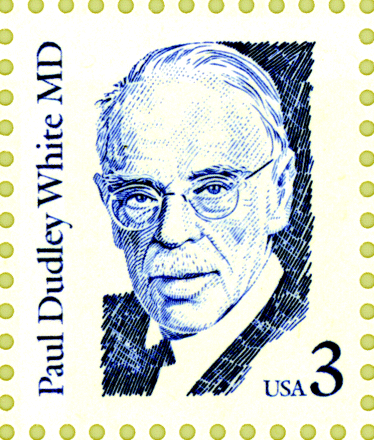
In the ensuing decade, treadmill testing, ambulatory EKG, and echocardiography were added to the menu of tests; and for the first time, a cardiologist and a statistician–IT expert were added to the staff. The racial/ethnic makeup of the study was also broadened, reflecting increasing diversity in the Framingham population. In the early 1980s, 100 Afro-American and other non-white participants were recruited. These became the nucleus of the Omni study, initiated in 1995 with 506 enrollees. A second generation Omni cohort of more than 400 was enrolled in 2003–2005 (9).
Into the twenty-first century, the Framingham Study has continued to make important correlations of medical, dietary, and genetic factors with heart disease, stroke, and arterial disease (10). One of its useful developments is a risk assessment tool for estimating a person’s ten-year risk of having a heart attack. The tool is based on entering seven factors: age, sex, total cholesterol, HDL cholesterol, smoker, systolic blood pressure, and whether currently taking high blood pressure medication (11). The algorithm on which the Framingham Risk Score (FRS) is based is well accepted. During the past dozen years many studies have proposed additional predictors, claiming improvement over the original FRS. An assessment conducted in 2009 of the claims made in seventy-nine such publications found flaws in their design, analyses, and reporting, thus bringing their reliability into question (12). The FRS is simple requiring only seven pieces of data, of which only three require a doctor’s exam or blood testing and its interpretation is easily understandable by the patient as well as the doctor (13).
The Framingham Study has made the American public conscious of the risks posed by high blood pressure and high cholesterol; it also contributed to public realization of the dangers of smoking and obesity. As a result, hypertension is now routinely treated, not ignored; there has been a shift toward more healthful eating habits, and smoking has been greatly reduced. The American public is more aware of health risk factors, though, being human, it does not always act as needed to avoid them.
The Tecumseh Community Health Study
Thomas Francis, Jr., again played a prominent role in modern epidemiology by organizing and advocating for the Tecumseh Community Health Study (TCHS) a decade after the Framingham Study was initiated. Tecumseh was selected from all the cities and towns located within a fifty-mile radius of the University of Michigan at Ann Arbor. It was deemed to be a representative Midwestern town in social and economic structure with a stable, mainly Caucasian, population of north and central European extraction. Of the town’s total population (9,800), 8,641 people were enrolled. This was one of two major differences from the Framingham Study. Framingham limited itself to a specific age bracket (see above). Because 88% of its population entered the study, Tecumseh is an example of an entire community serving as an epidemiology laboratory. The second difference lay in the areas of medical interest. Whereas Framingham concentrated on heart disease, Tecumseh planned to study the prevalence and interrelationships of CV disease, diabetes, chronic respiratory disease, and arthritis (14).
The Tecumseh study involved an extensive questionnaire covering medical and limited social history; it was administered individually in the home. At the clinic, a complete physical exam (including rectal and pelvic) was performed, anthropometric measurements were taken, and EKGs administered, as were chest X-rays on all persons aged sixteen and older. Vital capacities were measured, and blood and urine specimens were obtained (15). As in Framingham, the study staff were hired from outside the community to preserve confidentiality (15).
Although TCHS has not attained the fame of the Framingham Study, it has produced valuable results. TCHS was the first systematic investigation of familial predisposition to coronary heart disease (CHD) in an unselected population. It also demonstrated hyperglycemia to be a risk factor for CHD, thus opening up a new area of research (14–16).
The databases accumulated by these long-running prospective studies are also useful in ways not foreseen by the studies’ original planners. Thus, data from TCHS have been used to estimate excess mortality arising from influenza, and results were compared with previous estimates based on different methodology (17). In 2005, a study of the genes of 864 Tecumseh residents from 264 families turned up a link between hypertension and an extra-long form of the dop-amine receptor gene DRD4 (18). The data generated by logitudinal studies such as Framingham and Tecumseh may be “mined” to obtain answers to questions arising many years after the studies are organized.
Aging and Agriculture
Longitudinal studies might be considered to be a subset of a more general category of study, the community-wide epidemiologic study. Many of this class of study involve data collection at one point, or several points, in time; longitudinal studies are essentially open-ended. A brief summary follows of two longitudinal studies, widely different in aim, one old and one relatively recent. The older one is the Baltimore Longitudinal Study on Aging (BLSA), ongoing since 1958. The major advocate for this study was Nathan Wetherell Shock (1907–1989), director of the Gerontology Research Center of the National Institute on Aging, NIH. Shock maintained that aging is a normal process and should not be considered a disease. His choice of the longitudinal study as the best means to study aging may stem from his service (1959 to 1970) on the atomic bomb casualty advisory board of the NAS, an experience which would have made him familiar with the ABCC study (19, 20).

In accord with Shock’s philosophy of aging, BLSA’s rather ambitious objective was to distinguish the true effects of aging, per se, from the processes (e.g., disease, socioeconomic condition, limited education) whose effects become more prominent over time but are not biological mechanisms of aging. The study opened with 1,000 male volunteers, aged seventeen to ninety-six, all living independently; in 1978, women were added. Initially, BLSA examinations were done every two years and lasted 2.5 days. Recognizing that changes may occur more rapidly in older people, the protocol was revised: currently, everyone under fifty is retested every four years; those aged fifty to seventy-nine, every two years; and those eighty and older, every year (21). A report of the study’s findings up to 1980 has been published in book form (22).
In 1980, BLSA initiated studies into dementia, hoping to identify risk factors for Alzheimer’s disease (AD). In this area BLSA had the advantage that cognitive performance measures had been introduced as far back as 1960. BLSA investigations suggest that risk for AD can be predicted from cognitive performance as early as twenty years prior to onset. If confirmed, this would be most helpful whenever there is an effective medication for AD. There are also indications that hormone replacement (in women) and use of NSAIDs reduce the risk of AD. In men, low free testosterone may be a risk factor, but there is no information on whether replacement of that hormone would modify the risk (21).
Finally, a much younger and more specialized study is the Agricultural Health Study (AHS), begun by the National Cancer Institute in 1994 and still ongoing. AHS was designed to identify occupational, lifestyle, and genetic factors that may affect the occurrence of certain diseases in farming populations. Though agricultural workers are generally healthier than the general US population, research suggests that they may be more prone to certain cancers, asthma, neurologic disease, and reproductive problems. AHS focuses in particular on the health of those whose work includes applying pesticides and their families (23). North Carolina and Iowa were chosen for study as representative states having strong agricultural sectors employing diverse farming methods. More than 89,000 people were enrolled. Data are collected by means of questionnaires on enrollees’ health, occupational practices, lifestyle, and diet (23). Buccal cell collection for DNA was instituted in 2002. The study has produced a stream of scientific publications on such subjects as urinary pesticide levels among children, mothers, and fathers in farm and non-farm households; cancer incidence among participants in AHS; chemical predictors of wheeze among pesticide appliers; and retinal degeneration among licensed pesticide applicators (24). The findings of the AHS may ultimately have implications for the broader public, as has been the case with the findings of the Framingham and Tecumseh longitudinal studies.
- Copyright © 2010
References
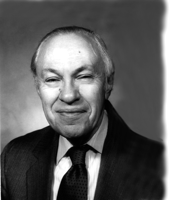
Stanley Scheindlin, DSc, holds a BS in pharmacy from Temple University and graduate degrees in pharmaceutical chemistry from Philadelphia College of Pharmacy and Science (now University of Sciences in Philadelphia). His academic research dealt with plant constituents and chemical interactions of vitamins. In his pharmaceutical industry career, he handled new drug formulation developments, and later regulatory affairs, presiding over the filing of about 100 generic new drug applications and two innovative drug applications. Now retired, his activities include volunteer work, consulting, and writing Reflections pieces for this journal. E-mail: stansch{at}verizon.net


